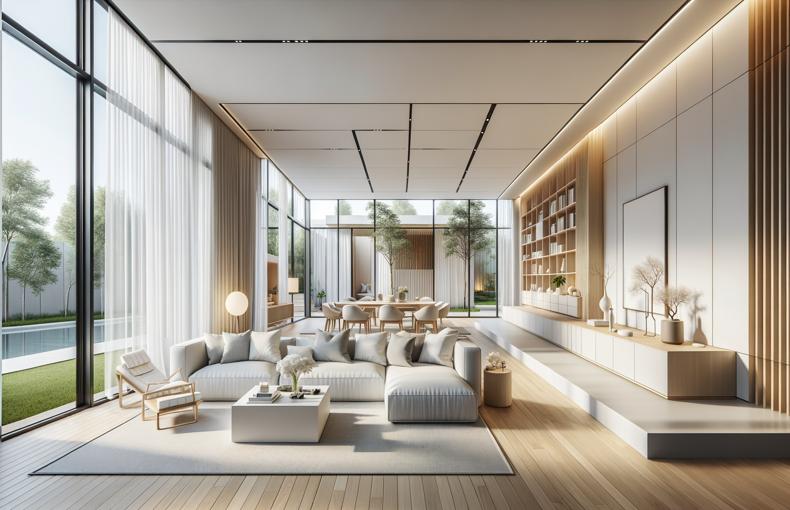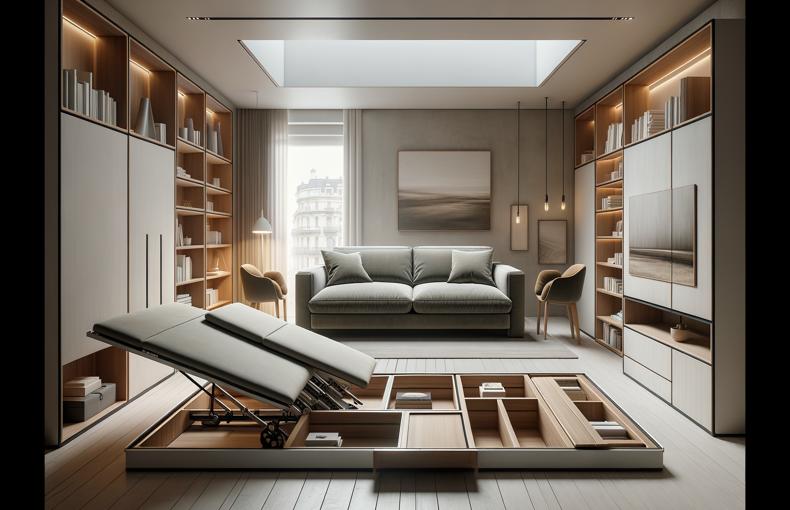Designing a Custom House Plan for a Minimalist Lifestyle
In a world where less is often more, the minimalist lifestyle has gained significant popularity. This approach to living emphasizes simplicity, functionality, and the elimination of excess. Designing a custom house plan for a minimalist lifestyle requires careful consideration and a focus on what truly matters. Here, we’ll explore the key principles of minimalist home design and provide tips to help you create a serene, clutter-free living space.
Understanding Minimalism in Home Design
Minimalism is not just about reducing clutter; it's about creating spaces that promote tranquility and ease of living. The minimalist design emphasizes clean lines, open spaces, and a neutral color palette. It’s about making intentional choices and ensuring every element in the home serves a purpose.
Key Principles of Minimalist Design:
- Simplicity: Focus on essential elements. Use simple, functional furniture and avoid unnecessary decorations.
- Functionality: Every piece of furniture and decor should have a purpose. Multi-functional furniture is a great choice.
- Open Spaces: Open floor plans and ample natural light make spaces feel larger and more inviting.
- Neutral Colors: Stick to a neutral color palette to create a calm and cohesive look.
Steps to Designing Your Minimalist Custom House Plan
-
Assess Your Needs
Before starting the design process, evaluate your lifestyle and needs. Consider the following:
- How many people will live in the house?
- What are the essential rooms and spaces you require?
- Do you need any specialized areas like a home office or a gym?
-
Choose an Open Floor Plan
Open floor plans are a staple of minimalist design. They create a sense of flow and make spaces feel larger. Consider integrating the kitchen, dining, and living areas into a single, cohesive space.
Pro Tip: Use rugs and furniture placement to define different areas within an open floor plan without using walls.
-
Prioritize Natural Light
Large windows and glass doors can flood your home with natural light, making it feel airy and spacious. Consider adding skylights or a sunroom to maximize natural light.
-
Select Multi-Functional Furniture
Choose furniture that serves multiple purposes to save space and reduce clutter. Examples include:
- A sofa bed for guests
- A dining table that doubles as a workspace
- Storage ottomans
-
Incorporate Built-In Storage
Built-in storage solutions help keep your home organized and free of clutter. Consider built-in shelves, under-stair storage, and hidden cabinets to maximize space efficiency.
-
Opt for a Neutral Color Palette
A neutral color palette creates a calm and serene environment. Shades of white, beige, gray, and soft pastels work well in minimalist homes. You can add pops of color through accessories like cushions and artwork.
-
Focus on Quality over Quantity
Invest in high-quality materials and furnishings that will stand the test of time. Minimalism is about having fewer, better things. Opt for durable materials like hardwood floors, stone countertops, and solid wood furniture.
-
Embrace Minimalist Decor
Minimalist decor should be simple and purposeful. Choose a few statement pieces rather than cluttering your space with numerous items. Plants, artwork, and textiles can add warmth and personality without overwhelming the space.
Benefits of a Minimalist Home
A minimalist home offers numerous benefits, including:
- Reduced Stress: A clutter-free environment promotes a sense of calm and reduces stress.
- Easy Maintenance: Fewer items mean less to clean and maintain.
- Financial Savings: Investing in fewer, higher-quality items can save money in the long run.
- Environmental Impact: Minimalism encourages sustainable living by reducing waste and consumption.
Conclusion
Designing a custom house plan for a minimalist lifestyle is an opportunity to create a home that truly reflects your values and supports your well-being. By focusing on simplicity, functionality, and intentional design, you can enjoy a serene, clutter-free living space that enhances your quality of life.
Embrace the minimalist lifestyle and create a home that is both beautiful and functional. Your journey towards simplicity starts with a well-thought-out custom house plan.












